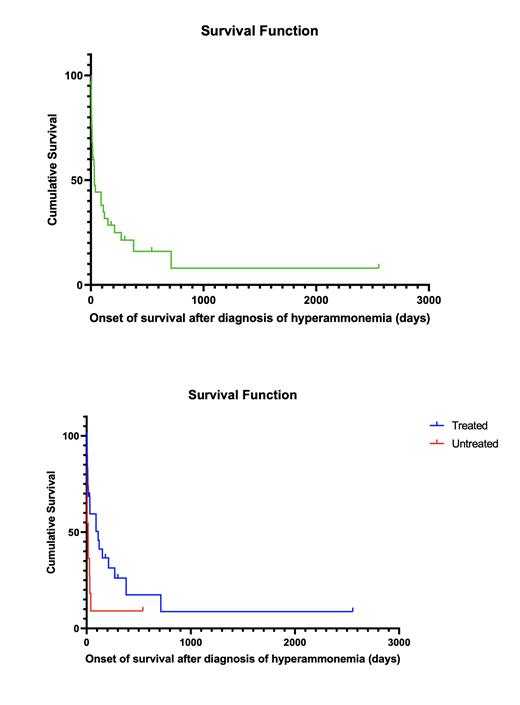Objectives: To better understand the presentation and clinical outcomes of hyperammonemic encephalopathy in multiple myeloma, we report 3 cases from our institution and present 55 published cases from the literature.
Background/Intro: Hyperammonemia is a rare but life-threatening complication of multiple myeloma with poor survival despite treatment. Little is known about the clinical presentation and outcomes of patients suffering from this entity. We hereby report a systematic review and a meta-analysis of cases with hyperammonemic encephalopathy.
Methods: Case reports and case series were identified using the Medline database, as well as PubMed search engine. Clinical and pathological data were collected and stratified by demographics and treatment. The data was further analyzed using SPSS.
Results: A total of 58 patients were included in the study. The mean age of the affected patients was 64.4 years, male to female ratio was 1.15:1. The median ammonia level measured was 123 μmol/L. Stage III disease was most prevalent in reported cases (89%). Most common MM subtype was IgG (38%) followed by IgA (36%). Thirty-seven patients (64%) had relapsed disease, while 17 (29%) were new diagnoses. Overall, 35 out of 58 (60%) patients died while being treated as inpatients. Chemotherapy was the only variable associated with an improved survival with p-0.02.
Conclusion: Hyperammonemia in the setting of multiple myeloma is an uncommon complication. It is associated with poor prognosis. Treatment should begin as soon as the diagnosis is confirmed with myeloma directed therapy in order to improve survival.
Disclosures
No relevant conflicts of interest to declare.


This feature is available to Subscribers Only
Sign In or Create an Account Close Modal